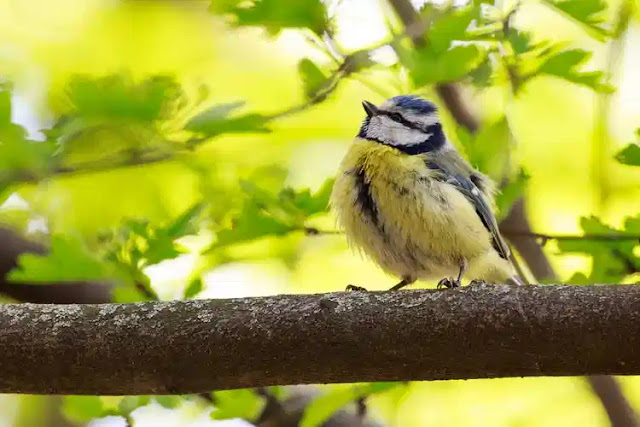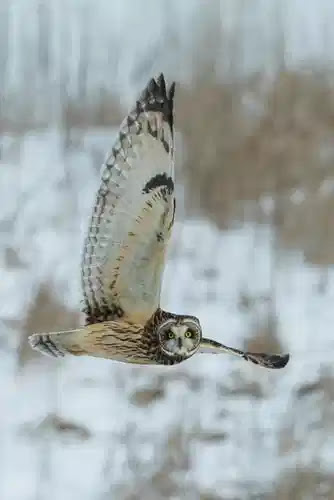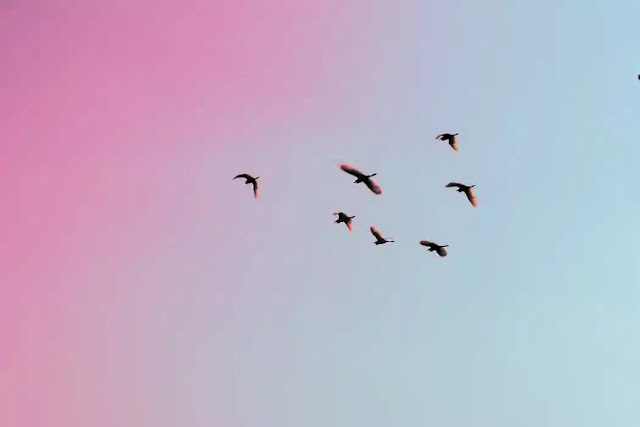- Types of Birds
 |
| Types of Birds |
Because of the consistent glide of the new facts acquired due to the development of DNA sequencing, the classification of birds, and relationships between orders and households are consistently changing. The contemporary classification carries forty orders of birds rather than 23 chicken orders in the preceding one.
- Birds of Prey
Diurnal Birds of Prey (Accipitriformes)
The first kind of bird is from the order Accipitriformes. It includes the diurnal birds of prey (i.e., lively in the day time), such as hawks, eagles, and ospreys. All these giant birds have a sharp, hooked beak with seen nostrils.
 |
| Types of Birds |
- Waterfowl Birds
Waterfowl Birds (Anseriformes)
The subsequent type of birds is from the order Anseriformes. Most of the birds in this classification are recognized birds such as ducks, swans, and geese. Birds in this order are known as Waterfowl birds as they stay close to water sources such as marine physique or freshwater ponds.
- Hummingbirds
Hummingbirds & Swifts (Apodiformes)
As per the modern-day taxonomic classification, each hummingbird and swifts belong to the order Apodiformes. Most of the birds in this order are very tiny and have “underdeveloped” feet. About 10% of the hen species in this team are threatened or endangered.
- Kiwis
Kiwis & Extinct Birds (Apterygiformes)
The subsequent team of birds belongs to order Apterygiformes, which is composed of flightless birds that stay on the ground, such as the well-known Kiwi – the countrywide chook of New Zealand. A special function of these monogamous kiwis is that they have a long, bendy beak with a downward curve on end. Most of the chicken species in this order are extinct now.
 |
| Types of Birds |
- Hornbills
Hornbills & Hoopoes (Coraciiformes)
These kinds of birds had been in the past belonged to order Coraciiformes. However, now they are categorized into the separate order of their very own referred to as Bucerotiformes. This order consists of hornbills, hoopoes, and woodhoopoes. The outstanding function of all birds in this taxonomy is that they have massive and tough bills.
- Nightjars
Nightjars, Frogmouths & Oilbirds (Caprimulgiformes)
The subsequent kind of birds belongs to the order Caprimulgiformes. This crew consists of birds such as Nightjars, Frogmouths, and Oilbirds. These birds have massive heads with massive eyes and are ordinarily nocturnal. They in particular feed on insects.
- Seriemas
Seriemas (Cariamiformes)
Both present-day and extinct species of birds belong to this chook order – Cariamiformes such as Seriemas. These birds are terrestrial birds that stay on the ground, and seldom fly. Interestingly, the heads of seriemas are comparable to heads of hawks. Seriemas are limited to South America only.
- Emus
Emus & Cassowaries (Casuariiformes)
Casuariiformes order consists of two households of flightless terrestrial birds that are each native to Australia: emus and cassowaries. Previously these herbivorous birds had been grouped with Kiwis however later categorized into its personal order now. These monogamous birds are substantial and heavy up to fifty-five kgs. Females are typically large than males.
- Shorebirds
Shorebirds (Charadriiformes)
Charadriiformes is one of the very most good-sized chicken orders. There are about 350 chicken species in it. Surprisingly, these birds have different in measurements from 0.006 to 4.4 pounds. As the title suggests, shorebirds stay close to the water: in wetlands, freshwater and seawater shorelines, on occasion close to the ocean. Some examples of shorebirds consist of Great auk, Crested Auklet, Horned puffin, and African Jacana.
- Storks
Storks, Herons & Vultures (Ciconiiformes)
The subsequent team of birds additionally stay close to the water or are entirely aquatic is referred to as Ciconiiformes. Most Ciconiiformes have lengthy necks, lengthy beaks, and ft barring webbing. The plumage of most species in the order combines most effortless shades – grey, white, and black. Currently, 21 species of Ciconiiformes are severely threatened.
- Mousebirds
Mousebirds (Coliiformes)
Coliiformes is the smallest chicken order which consists of solely 6 species of tiny mousebirds. These mousebirds are located in sub-Saharan Africa. These herbivorous birds are social and frequently observed in small groups. Coliiformes nest in colonies.
- Pigeons
Pigeons and Dodos (Columbiformes)
Columbiformes order embraces each extinct and residing species of pigeons (or doves), as properly as the well-known dodos. Pigeons are regarded for feeding their younger “bird milk” very comparable to the milk of mammals. The species of this order can be located nearly everywhere.
- Kingfishers
Kingfishers, Rollers, & Bee-eaters (Coraciiformes)
Coraciiformes is a numerous and colorful chicken order which consists of kingfishers, rollers, and bee-eaters. Most of the species spend a sizeable section of their existence on trees. Ornithologists reflect on consideration on rollers the main household of this order.
- Cuckoos
Cuckoos, Roadrunners & Koels (Cuculiformes)
Cuculiformes is one of the most well-known hen orders, as it incorporates parasitic chicken species – cuckoos. These birds location their eggs into the nests of birds of different species and the hatched chicks smash all different eggs or chicks in the nest. Many of the birds in the order are very vocal.
- Sunbitterns
Kagus & Sunbitterns (Eurypygiformes)
Eurypygiformes order includes solely a few species, and some of them are already extinct (Lowland kagu and Attorneys). Two dwelling species in the order are the New Caledonian endemic kagu and sunbittern. Both the kagu and the sunbittern have plumage with a complicated pattern.
- Falcons
Falcons (Falconiformes)
Birds in Falconiformes order are fantastically environment-friendly predators – Falcons. Virtually all these brown-eyed falcons have hooked payments that assist tear up the prey. All these birds have well-developed sight and hearing. Currently, many Falconiformes species are endangered.
- Turkeys
Chickens & Turkeys (Galliformes)
This massive and various team of birds in order Galliformes consists of species historically imperative to human beings as home birds and searching chicken (Chickens and Turkeys). Many Galliformes have vivid crests and decorative tails. These birds decide upon to strolling & strolling than flying and predominantly feed on the ground.
- Loons
Loons (Gaviiformes)
These subsequent sorts of birds belong to order Gaviiformes which consists of numerous species of birds that stay and hunt on the water – Loons. These sturdy webbed ft birds swim on the water to consume fish. Interestingly, the toes of loons are positioned nearer to their tails, so they have concern taking walks on land!
- Cranes
Cranes & Rails (Gruiformes)
Gruiformes order includes very numerous birds, each in dimension and different features. Most vital species of Gruiformes are cranes and quails, however there additionally different much less recognized species. Many Gruiformes have long, narrow payments and lengthy & sturdy legs. These birds are recognized for different mating rituals!
- Cuckoo Rollers
Cuckoo Rollers (Leptosomiformes)
Cuckoo curler belongs to a distinct chook order – Leptosomiformes which carries simply this fowl species. Cuckoo rollers stay in the Comoro Islands and Madagascar. Surprisingly, the eyes of cuckoo rollers are set again in the face. These birds stay mainly in forests and feed on insects.
- Mesites
Mesites (Mesitornithiformes)
Mesitornithiformes order carries three species of Mesites discovered solely in Madagascar. They are associated with doves. Mesites are small birds. Mesites are almost flightless and spend most of the time on land. Currently, all mesites are endangered.
- Turacos
Turacos & Plantain Eaters (Musophagiformes)- Turacos
The subsequent chicken order Musophagiformes consists of birds that are located in sub-Saharan Africa, specifically turacos and plantain eaters. Musophagiformes have a long tail in contrast to the usual physique length. All of the birds in the order have a crest on their heads. Pigments in these birds’ feathers are copper-based, which is special in the chook kingdom.
- Hoatzins
Hoatzins (Opisthocomiformes)Previously, it used to be the notion that Hoatzins used to be associated with Galliformes, however, these days they have been assigned to a separate order – Opisthocomiformes. The faces of hoatzins are naked and are blue. These herbivorous Hoatzins have a crest on their heads that resembles a fan!
- Bustards
Bustards (Otidiformes)
The birds of the order Otidiformes may additionally belong to the higher clade Gruiformes in some classifications. However, these birds (Bustards) have a number of conspicuous characteristics, from look to behavior, that area them apart. Otidiformes birds decide on foot and running, however, can fly when frightened.
- Perching Birds
Perching Birds (Passeriformes)
The subsequent kinds of birds are perching birds which are in the order Passeriformes (the greatest fowl order in the chicken kingdom). All passerines have 12 tail feathers, and they have robust muscle tissue in their voice field or syrinx. Some examples consist of Oriental Skylark, Long-tailed tit, and Asian fairy-bluebird.
- Pelicans
Pelicans & Frigate Birds (Pelecaniformes)
The subsequent set of birds come beneath Pelecaniformes which unites a number of households of water birds such as pelicans, cormorants, and frigatebirds. These birds can be discovered in the shoreline of freshwater basins as properly as in marine habitats. Many chook species in this order are seriously endangered, and some are even extinct.
- Tropicbirds
Tropicbirds (Phaethontiformes)
The tropical birds are carefully associated pelicans and comprised of sea birds in the order Phaethontiformes. There are solely three tropicbirds in this order, specifically Red-billed tropicbird, White-tailed tropicbird, and Red-tailed Tropicbird. As the identity suggests, these birds are commonly observed in the tropical and subtropical regions.
- Flamingoes
Flamingoes (Phoenicopteriformes)
Flamingoes belong to the order Phoenicopteriformes which incorporates solely six species of flamingoes. All Phoenicopteriformes are tall & giant birds and have quite a few special traits. Flamingoes have bristles internal the payments and on their tongues.
- Woodpeckers
Woodpeckers (Piciformes)Woodpeckers are the subsequent sorts of birds belong to the order Piciformes. The essential uniting characteristic of Piciformes is their tendency to nest in tree cavities. Piciformes have robust jaw muscles. Some examples of Piciformes are Downy woodpecker, Northern flicker, Brown jacamar, and Moustached puffbird.
- Grebes
Grebes (Podicipediformes)
The order Podicipediformes consists of birds that stay normally in freshwater or close to the coast. Interestingly these birds are unique from differently regarded waterbirds. The nails of Podicipediformes are flat. Grebes make floating nests on the water. Some species of Grebes are extraordinary crested grebe, red-necked grebe, and short-winged grebe.
- Albatrosses
Albatrosses & Petrels (Procellariiformes)
The subsequent chicken order Procellariiformes unites sea birds that come on land solely for the breeding season! Procellariiformes have a long, hooked invoice with tubular nostrils. These birds can eject foul-smelling belly oil as protection towards predators. Laysan albatross, Shy albatross, Peruvian diving petrel, and Black-capped petrel are some of the instance species in Procellariiformes.
- Parrots
Parrots (Psittaciformes)
The most cherished birds are parrots which belong to the chook order Psittaciformes. The most recognizable characteristic of parrots is a short, curved beak. Parrots are regarded for their talent and potential to mimic sounds. Some parrot species are Rose-ringed parakeet, Gray parrot, Rainbow lorikeet, Roseate cockatoo, and Kakapo (endangered).
- Sandgrouses
Sandgrouses (Pteroclidiformes)
Previously, Pteroclidiformes was once a phase of a household of Charadriiformes. It unites a number of species of desolate tract birds (Sandgrouses), and they are now a separate order. Sandgrouse has pointed wings. Most of the Pteroclidiformes have pinlike central feathers. Tibetan sandgrouse, Spotted sandgrouse, Black-faced Sandgrouse, and Lichtenstein sandgrouse are some of the species of Pteroclidiformes.
- Rheas
Rheas or Nandus (Rheiformes)
Rheiformes is a small order of giant flightless birds (Rheas) that are comparable to emus and ostriches, however, they are smaller than ostriches. Most of the species in this order are extinct. Rheas have giant wings that they can unfold like sails whilst running. These birds are discovered in South America.
- Penguins
Penguins (Sphenisciformes)
All of the birds (penguins) in the order Sphenisciformes stay in the Southern hemisphere. They in the mainstay in the ocean or close to the ocean’s coast. The payments of penguins are lengthy and compressed from the sides. There are 18 sorts of penguins in the world which consists of the well-known species such as Emperor penguin (largest), Galapagos penguin, and Gentoo penguin.
- Owls
Owls (Strigiformes)
Strigiformes order unites more often than not nocturnal and carnivorous birds. Owls have special smooth plumage. All owls have a so-called facial disk that frames the eyes and the bill. Owls use cavities in bushes or deserted nests as an alternative to constructing their own. There are 244 acknowledged sorts of owls in this order.
- Ostriches
Ostriches (Struthioniformes)
Struthioniformes order incorporates the sole species – Ostriches. Ostriches are unique from different ratites – birds except for a keel. Ostriches are polygamous and structure harems. Interestingly, Ostriches have zero feathers on their legs and necks. Some instance subspecies of the frequent ostrich are the North African ostrich, Masai ostrich, and Arabian ostrich (extinct).
- Boobies and Gannets
Boobies & Gannets (Suliformes)
Suliformes order unites sea birds that nest in colonies such as boobies and gannets. Previously, they used to belong to the identical order as frigate birds (Pelecaniformes). However, they are on their personal order – Suliformes. All Suliformes are marine species and spend a giant element of the 12 months away from the land. Species in this order numerous and right here are some examples: Adams Booby, Red-footed booby, Masked booby, and Australasian Gannet.
- Tinamous
Tinamous (Tinamiformes)
Order Tinamiformes includes quite a few households of chicken-like birds (tinamous) that stay predominantly in neotropics. Tinamous can fly however select to remain on the ground. Tinamous have brief wings and a brief tail. A white-throated tinamou, Hooded tinamou, Barred tinamou, Chilean tinamou, and dwarf tinamou are some of the instance species in this order.
- Trogons
Trogons & Quetzals (Trogoniformes)
The final kind of birds belongs to the hen order Trogoniformes which hosts birds such as trogons & quetzals, that ordinarily stay in hotter areas. All Trogoniformes are brightly colored and have long-tails. This hen order consists of species such as Narina trogon, Red-naped trogon, Cuban trogon, Mountain Trogon, Pavonine Quetzal, and Resplendent Quetzal.




No comments:
Write commentsThanks for comment.